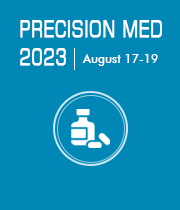Digital Phenotyping
"Moment-by-moment quantification of the individual-level human phenotype in-situ utilizing data from cellphones and other personal digital devices," according to the definition of digital phenotyping. To put it another way, this technology makes use of sensors to track a person's behavior, location, and speech patterns (e.g., intonation). The measuring focus is not on content (what you write), but on how you type, when assessing human-computer interaction (for example, the use of a smartphone). Machine learning is used to aggregate and evaluate these interactions—the patterns and timings of user activity on touch-screen devices. Digital "biomarkers" relate to the outcomes of these interactions. As a clinical tool, digital phenotyping is currently being developed. Digital technologies and techniques have a lot of potential. Indeed, the COVID-19 pandemic has demonstrated the value of telehealth platforms and mental health applications (apps) during a period of quarantine and social isolation.
- Digital Medicine Redesigning
- Dematerialized Medicine
- Digital Psychotropic Medication
- Psychoanalysis

Bernd Blobel
University of Regensburg, Germany
Roy Gary Beran
University of New South Wales, Australia
Matthias Schwab
University of Tubingen, Germany
Thomas Webster
Interstellar Therapeutics, United States
Boris Tankhilevich
Magtera, Inc., United States
Isabella Friis Jorgensen
University of Copenhagen, Denmark


Title : The use of anti seizure medication therapeutic blood level determination to personalise the treatment of epileptic seizures especially in patients attending the accident and emergency department
Roy Gary Beran, University of New South Wales, Australia
Title : Personalized and precision medicine (PPM) can be established as a unique healthcare model through biodesign-driven and inspired biotech, translational applications. This approach aims to ensure human healthcare, wellness, and biosafety.
Sergey Suchkov, Institute for Biotech & Global Health of RosBioTech and A.I. Evdokimov MGMSU, Russian Federation
Title : Monitoring folds localization in ultra-thin transition metal dichalcogenides using optical harmonic generation
Ahmed Raza Khan, Australian National University, Australia
Title : A systematic review of regulatory approaches for Direct- To- Consumers (DTC) genetic testing
Kavitha Palaniappan, Duke-NUS Medical School, Singapore
Title : Regulatory framework of in vitro diagnostic and artificial intelligence for precision medicine
Pei Ting Sarah Chou, Regulatory Affairs Professionals Society, Taiwan
Title : Unraveling cancer stem cell signatures in circulating tumor cells of metastatic colorectal cancer: Investigating ALDH1A1 and the repurposing potential of disulfiram via scRNA-seq
Nurul Syakima Ab Mutalib, Universiti Kebangsaan Malaysia, Malaysia